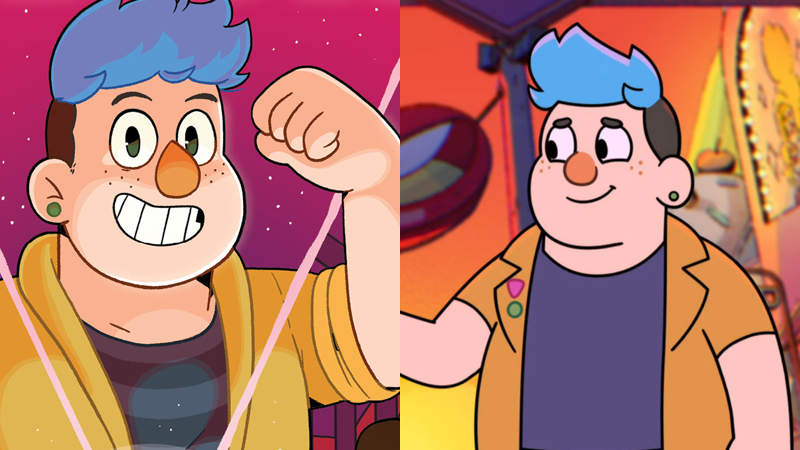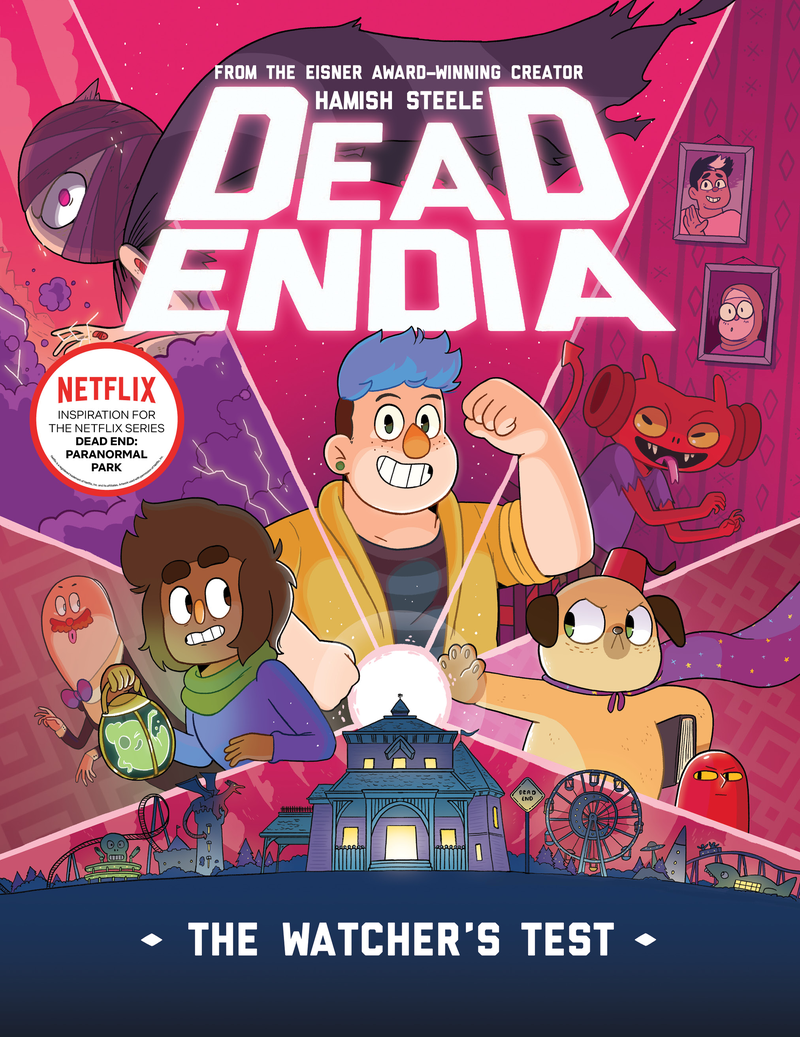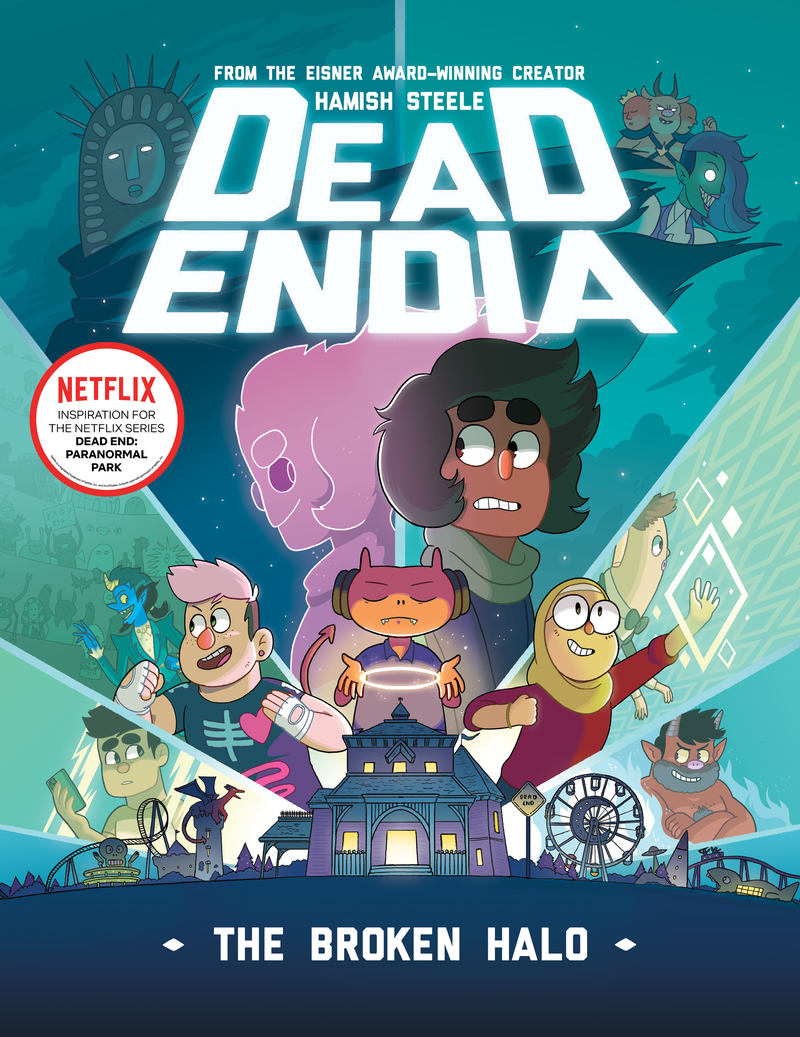Dead End: Paranormal Park's Hamish Steele Reflects on Adaptation and DeadEndia's Future

- Oops!Something went wrong.Please try again later.
Every author who wants their work adapted for the screen would probably hope that it is done with care and respect for the source material. But when you find yourself in charge of your own adaptation, do you stick to every word or do you use it as an opportunity to make something new?
Dead End: Paranormal Park was an adaptation of an adaptation of an adaptation. While primarily based on my DeadEndia graphic novels series (which are receiving deluxe, expanded reprints from Union Square, on sale May 2nd, 2023), the story of Barney and Norma began life as an animated pilot from the studio behind Adventure Time in 2013. It was my first job in the animation industry and we’d hoped for it to become a full TV show, but it wasn’t meant to be just yet. Instead, I developed the pitch into a webcomic. By the point we were pitching the potential series to networks, the characters had become so much richer and the story so much more exciting then what was presented in that original pilot, and I couldn’t let it die. And at the time, almost no kids tv had queer characters, but this was something I had so much freedom to explore in comic form. Comics were my night job, animation was my day job and in 2019, when I came to pitch DeadEndia again to Netflix, I’d accumulated enough experience in animation to be given the showrunner position.
Read more
However, in taking Barney’s story from a little Tumblr webcomic into the world’s biggest streaming service, I couldn’t just make a word-for-word adaptation. In fact, day one in the writers room, I asked all our team to rip into the books and let me know what they liked and loathed about them. It’d be a waste of everyone’s time to assemble such a talented group and then tell them to stick to every story decision I’d made back when I was 20.

Reading a comic book is almost always a solitary experience. The main character can have a one-on-one conversation with you. The books are told largely from Barney’s POV, so his problems with his family are presented extremely one-sided. His parents are transphobic and Barney had to get out of there, end of discussion. What changes when you take a story like that and turn it into a TV show is that families are more likely to be watching this narrative together. While in the books, Barney’s parents are mostly an off-screen concept, in the show they had to become characters in their own right. In the writers room, we kept picturing young, closeted, queer kids watching the show with less accepting parents. We needed the show to have lessons parents could take away, as well as the kids. This led to the show needing more “Trans 101” moments, including Barney having an open discussion with his parents and explaining the specific instances of their microaggressions. Additionally, in the books Barney begins the story already friends with the co-lead Norma whereas in the show, we have the ability to watch their relationship grow from relative strangers to besties. As a result, we included a coming out scene for Barney, which the comic never needed. In truth, my audience on Tumblr took one look at Barney and claimed them as one of theirs before I had a chance to say in the comic myself.
Barney’s identity as a gay, trans teenager helming an LGBTQIA+ cast is the aspect of the Dead End and DeadEndia which has received the most attention, and is directly linked to how many times DeadEndia has changed mediums. As a webcomic, a found family narrative involving queer people and demons is hardly revolutionary. In fact, it’s basically a trope. But as a children’s tv series, having any overt, canonical, unmistakable declaration of a main character’s trans identity, it became “historic.”
This is why queer representation changes depending on the medium. Webcomics have always been decades ahead of mainstream media when it comes to LGBTQIA+ storylines. They’re one of the most accessible forms of media, being both free to produce and free to consume. They can target more niche subject matter and find an audience hungry for that content. The extra barriers that publishers bring when looking for a surefire hit can be avoided in favor of more niche subject matters. Books like Check Please and Heartstopper began as webcomics and proved that there were gargantuan audiences out there for stories about queer experiences. I always found that pages of DeadEndia featuring Barney and his love interest Logan would get quadruple the likes and shares then pages about demons, angels and ghosts.

However, webcomics are not perfect. The downside of all that “freeness” is that webcomics are only going to be produced by people who can afford to take that financial hit. As a result, often the version of queerness that makes it to the front page WebToon or Tapas is quite a narrow intersection of the community when it comes to race and body diversity. That’s in addition to losing out on all the benefits a good publisher and editor can bring to one’s story.
Dead End: Paranormal Park was sadly canceled this year and so the story cannot conclude on screen. The politics of TV production means that you’re never guaranteed to end things on your terms. With comics however, you often can. Brand new definitive editions of the first two books, The Watcher’s Test and The Broken Halo, can be preordered (links below), and I am currently drawing the third book of the trilogy, DeadEndia: The Divine Order. As I write this final chapter, I take with me everything I have learned from telling Barney and Norma’s story through webcomic, animated short, graphic novel and tv series. I hear different voices now as I write them, ones inspired by the wonderful cast of the show. And yet it’s really nice to go back to these original versions of the characters and once again talk to my readers, one-on-one.
DeadEndia: The Watcher’s Test and DeadEndia: The Broken Halo are set to release for the first time in the U.S. May 2, and are available for preorder now. The third and final graphic novel in the series, The Divine Order, is in the works. Seasons 1-2 of Dead End: Paranormal Park are now streaming on Netflix.
Want more io9 news? Check out when to expect the latest Marvel, Star Wars, and Star Trek releases, what’s next for the DC Universe on film and TV, and everything you need to know about the future of Doctor Who.
More from Gizmodo
Sign up for Gizmodo's Newsletter. For the latest news, Facebook, Twitter and Instagram.

